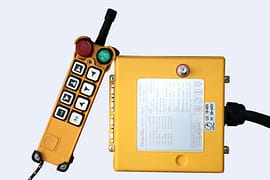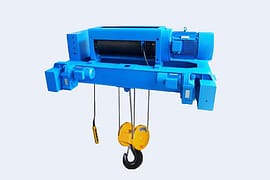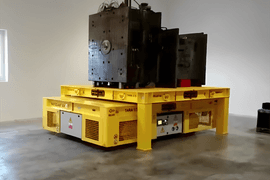- INDUSTRIES
-
EQUIPMENT
-
Overhead Cranes
-

Single Girder Overhead Crane
-

Double Girder Overhead Crane
-

Underslung Cranes
-

Workstation Overhead Cranes
-

Low Headroom Overhead Cranes
-

Grab Bucket Overhead Crane
-

Electromagnetic Overhead Cranes with Lifting Magnet
-

Electromagnetic Overhead Cranes with Magnet Beam
-

Manual Overhead Cranes
-

Double Trolley Overhead Cranes
-

LDP Single Girder Overhead Cranes
-
- Eot Cranes
- Gantry Cranes
- Jib Cranes
- FEM Standard Crane & Hoist
- Hoist & Winch Trolley
- Light Cranes
- Explosion Proof Cranes and Hoists
-
Special Cranes
-

35-65t Clamp Overhead Crane
-

Boat Hoists
-

Boat Jib Crane
-

Yacht Davit Crane
-

Rail Mounted Container Gantry Crane
-

Cleanroom Overhead Cranes
-

YZ Ladle Handling Cranes
-

LDY Metallurgical Single Girder Crane
-

Charging Cranes for Steel Production
-

Insulated Overhead Cranes
-

Gantry Crane for Subway and Metro Construction
-

Forging Crane
-

Quenching Overhead Crane
-

Baking Multifunctional Crane
-
- Port Cranes
- Electric Transfer Carts
-
Overhead Cranes
-
CRANE PARTS
- Crane Wheel Range
- Crane Spreader
- Crane Drives
-
Crane Electrical Equipment
-

Overload Limiter
-

Crane Cabin
-

Crane Power Supply System
-

Explosion Proof Crane Radio Remote Controls
-

Joystick Type Crane Radio Remote Controls
-

Pushbutton Type Crane Wireless Remote Controls
-

Single-pole Insulated Conductor Rails
-

Enclosed Conductor Rails
-

Seamless Conductor Rails
-

Copperhead Conductor Rails
-

Overhead Crane Cables
-
- Other Cranes Parts
\
- ABOUT US
- CONTACT US
Cranes are commonly used in the construction of towers and industry, and in manufacturing heavy equipments. Cranes ranges from small site crane to big cranes and deck cranes that lift heavy equipments. Basically, they are temporary structures in construction. They are either fixed on the ground or hoarded on a purpose-built vehicle. Cranes come in different types such as jib, gantry, ship and deck, bridge or overhead, boom, tower, and mobile or truck.
Before operating the crane, operators should carefully read and understand the operation manual from the crane manufacturer. Further, they must always note any instructions given by a reliable instructor or operator. It is also crucial for the crane operator to understand the consequences of careless operation of cranes. They must be instructed of the proper use, prohibition and the safety rules and regulation during the operation.
It is always the responsibility of the owner to make their personnel aware of all federal rules and codes so as to preclude violations along with their penalties. Employers must also make certain that their operators are properly trained and are equipped with the know-how. To be safe in the operation of crane, it requires skill and exercise of great care and ideal foresight, alertness and concentration. Also strict adherence to proven safety rules and practices is necessary.
The personnel who handle the operation of cranes in an area must utilize hand signals, if necessary, as their means of communication. Here are the most commonly used hand signals during crane lifting operation:
- HOIST. Raise the forearm vertically and extend the right arm straight out with forefinger pointing up. Then, move hand in small horizontal circle.
- LOWER. Forefinger pointing down and extend right arm downward then move hand in small horizontal circle.
- STOP. Extend right arm down with wrist bent, palm down and open.
- SWING. Right arm away from body, point with finger in direction of swing of boom.
- RAISE BOOM. Fingers closed and thumb pointing upward while extending the right arm straight out.
- LOWER BOOM. Fingers closed and thumb pointing downward while extending the right arm straight out.
- BRIDGE TRAVEL. Extend the right arm forward, hand open and slightly raised and make pushing motion in direction of travel.
- TROLLEY TRAVEL. Thumb pointing in direction of motion with palm up and fingers closed, jerk hand horizontally.
- EMERGENCY STOP. Extend right arm, palm down and move hand rapidly left and right.
- MULTIPLE TROLLEYS. For block marked 1. hold up one finger, and two fingers for block marked 2. Regular signals come next.
- RAISE BOOM and LOWER LOAD. Right arm extended and thumb pointing up. Flex fingers in and out as long as load movement is needed.
- LOWER BOOM and RAISE LOAD. Right arm extended and thumb pointing down. Flex fingers pointing in and out as long as load movement is needed.
- DOG EVERYTHING. Hold hands in front of the body.
- MOVE SLOWLY. One hand gives any motion signal while the other hand motionless in front of hand giving the motion signal.
- MAGNET IS DISCONNECTED. Spread both hands.
When using these hand signals be sure that you and the crane operator are familiar with these signals. A wrong signal could cause a serious injury or worst – death.
Always stay alert when you are working in construction near any crane. If possible, avoid working under a moving load and stay clear of the counter balance. Always use your safety devices and helmet to avoid injuries. Safety is always the top priority of all workers and the crane operator.


Zora Zhao
Expert in Overhead Crane/Gantry Crane/Jib Crane/Crane Parts Solutions
With 10+ years of experience in the Crane Overseas Export Industry, helped 10,000+ customers with their pre-sales questions and concerns, if you have any related needs, please feel free to contact me!
WhatsApp: +86 158 3611 5029
Email: zorazhao@dgcrane.com
Related Blogs
Subscribe to our newsletter
The latest DGCRANE price list, news, articles, and resources.
- Gantry Cranes
- Shipyard Gantry Cranes: Specialized Lifting Solutions for Shipyard Operations
- Truss Gantry Cranes: Cost-Effective, Wind-Resistant, and Perfect for Large Spans
- Gantry Crane
- Different Types of Small Portable Aluminium Gantry Cranes: Cost Effective
- Single Girder Gantry Cranes
- Double Girder Gantry Cranes
- Semi Gantry Cranes
- Casting Yard Gantry Cranes
- Container Gantry Cranes (RMG)
- Portable Gantry Cranes
- FEM Standard Crane & Hoist
- FEM Standard Overhead Cranes
- FEM Standard Gantry Cranes
- FEM Standard Jib Cranes
- FEM Standard Wire Rope Electric Hoists
- FEM Standard Electric Chain Hoists
- Hoist & Winch Trolley
- Low Headroom Wire Rope Electric Hoist: Compact Design for Efficient Lifting in Tight Spaces
- Electric Hoist for Molten Metal: High-Temperature, Safe Lifting for Metallurgical Environments
- Pneumatic (Air) Chain Hoists: Ideal for Explosion-Proof Environments
- 6 Double Girder Trolley Electric Hoists for Overhead Cranes: Custom Solutions for Every Lifting Need
- Manual Chain Hoists: Alloy Steel Construction for Smooth and Safe Lifting
- Electric Wire Rope Hoists
- Chain Hoists
- Crane Trolley
- Electric Winch
- Port Cranes
- Rubber Tyred Container Gantry Crane
- Ship To Shore Crane
- Container Straddle Carrier
- Harbour Portal Crane
- Shipyard Portal Cranes
- Reliable Versatile Electric Transfer Carts
- Powerful Heavy Duty Coil Transfer Carts
- Powerful Pallet Transfer Carts
- Rail Transfer Carts
- Reliable Heavy Duty Ladle Transfer Cars
- RGV Transfer Carts
- Superior Die Transfer Carts
- Trackless Transfer Carts
CRANE PARTS
- Special Cranes
- Rail Mounted Container Gantry Crane
- Cleanroom Overhead Cranes: Reliable Solutions for Healthcare, Electronics, and GMP Workshops
- Charging Cranes for Steel Production: Safe and Reliable Solutions for Efficient Material Handling
- Insulated Overhead Cranes for Safe Non-Ferrous Metal Smelting
- Gantry Crane for Subway and Metro Construction: Efficient Tunnel Debris Removal Solutions
- Quenching Overhead Crane for Heat Treatment Plant: High-Temperature Insulated and Efficient Lifting Solution
- Heavy Duty Forging Cranes: Durable, High-Capacity Solutions for Forging
- Baking Multifunctional Crane: Furnace Tending Assembly for Efficient Carbon Roasting
- 35-65t Clamp Overhead Crane
- Boat Hoists
- Yacht Davit Crane
- Boat Jib Crane
INDUSTRIES
COMPANY
- sales@dgcrane.com
- +86-373-3876188
- +86 158 3611 5029
- Floor 30,Gongyuan INT'I Building, Jinsui Road, Xinxiang City, Henan Province, China



















































































